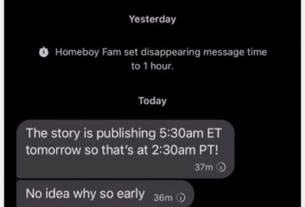The Internet knows many birthdays, April 30 is another: 30 years ago, Tim Berners-Lee and Robert Cailliau received written confirmation from one of the directors of the Geneva nuclear research center CERN. According to her, it is now legal for anyone to use the web protocol and program a web server or web browser and give away or sell the software. CERN does not charge a license fee or impose any other conditions on distribution. The confirmation paved the way for the triumph of the World Wide Web. It is something like a declaration of independence against all attempts to compress the WWW into commercial exploitation rushes.
If you want to understand the significance of the license anniversary, you need to delve a little into the development history of the 90s. Beginning in 1991, Tim Berners-Lee tried to get his idea of a Web server and Web browser as components of an information retrieval system to the public. So he proved his idea of him with a place attendees at the HyperText’91 conference held in San Antonio, Texas in December. His submitted paper was rejected by the conference organizers, but that didn’t stop Berners-Lee from using the system on his friend’s NeXT Paul Jones to prove, that he taught library science at the University of North Carolina. Throughout 1992, Berners-Lee and his project leader, Robert Cailliau, watched ideas plummet to the www-talk mailing list. With Erwise and ViolaWWW were the first browsers for X Window, a browser called Samba for Mac was announced.
In March 1993, Tim Berners-Lee returned to the United States for Fermilab to demonstrate his system in Chicago. In town, she met Tom Bruce, who was developing a browser called Cello for Microsoft Windows, and heard about the development of a browser National Center for Supercomputing Applications in Illinois. With friends, he crossed the prairie from Chicago, only to find that development had taken a very different route. At NCSA, they didn’t say you could find something on the web, they talked about something “on Mosaic.” At the same time, Marc Andreessen, one of the project managers, discussed what the licensing conditions might look like. A first report immediately appeared in the New York Times, portraying Mosaic and programmers without once mentioning the web.
The Gopher Disaster
At that time the Web and its servers and browsers were still fringe phenomena of interest to hypertext geeks and information retrieval system programmers. An early forerunner of the search engine called Gopher, which was being developed at the University of Minnesota, attracted much more attention at the time. The “pocket rat” was an information system that was accessed through clients available for X Window, Mac, DOS and Unix.
In his widely circulated standard work, Whole Internet Users Guide & Catalog, Ed Krol praised Gopher as a recovery system for everyone. However, he criticized that the directory structures and classifications were not maintained by qualified librarians, so each instance of Gopher was structured slightly differently. He simply urged his readers to experiment with the gopher: “No one watches and laughs at your mistakes. Then just fail!”
Something completely different was bothering Tim Berners-Lee at the time. In the spring of 1993, the University of Montana began changing the terms of the license. While the clients can be used for free, businesses would have to pay a lot for Gopher servers. Universities also had to pay an annual fee. Additionally, the Gopher protocol was licensed under the condition that it was owned by the university. The result: The IT industry has abandoned Gopher like a hot potato, Berners-Lee wrote of a Gopher disaster.
computer system of unprecedented proportions
To his relief, this couldn’t happen to the web. After his return from the United States, mail flew into the house. In his book “Weaving the Web” Berners-Lee recalled the great moment of 1993: “On April 30 Robert and I received a statement, with a CERN stamp, signed by one of the directors, stating that CERN agreed to allow anyone to use the web protocol and code for free, to create a server or browser, to give or sell as a gift, without any royalties or other obligations. Damn!” (“On April 30, Robert and I received a statement signed by one of the directors with a CERN stamp, stating that CERN has agreed to allow anyone to use the web protocol and code for free, a server or a browser create it, give it away or sell it without royalties or other restrictions. Oof!”)

Tim Berners-Lee, inventor of the World Wide Web, does not care about the developments of Web 3.0.
(Image: dpa, Sven Braun/dpa)
With confirmation from management, it was ensured that the World Wide Web could continue to develop after the Big Bang. How feasible the system was became clear at the latest when the browser war between Netscape and Microsoft heated things up. The Web has continued to grow despite the millions that Microsoft and Netscape have invested in a pitched battle to capture the “market”. From the judgment of Berners-Lee and Cailliau’s superiors, who commented on all of the two’s proposals as vague but exciting, an information system of unprecedented proportions has finally grown, with companies such as Google and Amazon. Without the web protocol, they wouldn’t even exist.
In the tradition of this form of Freedom to design programs, as was once formulated by Richard Stallman, is the future Berners-Lee is pursuing with the World Wide Web Consortium as a non-profit organization. Sir Berners-Lee, who has since been ennobled, could reveal what else he is up to at the WeAreDevelopers congress. Or not. As is well known, Berners-Lee recently spoke out against Web 3.0 and its scam offerings with blockchain and cryptocurrencies.
(Yes)




